I would hope that most readers will realize that the title of this post is reasonably sarcastic. However, all well-formed sarcasm has some basis in reality, and that is also the case here. An early draft on this topic might have used the alternative adjective Antisocial, but that term possesses a pejorative character that would not be appropriate. Instead, I use a less judgmental phrase that better conveys the strangeness of the last few months.
It has been a pleasant occurrence for me that all of my previous cycling tours could generally be considered to have been completed successfully. To be sure, there have been unwelcome mechanical problems, pieces of equipment left behind somewhere, segments over terrible roads, and periods of bad weather, but with the essential quality of personal resilience always kept in mind, those factors, and similar issues, never reached a level of seriousness that prevented me from reaching my final destination, more or less on time. Though I never mentioned this to anyone, in the last few months before the World2 Tour began I felt a consistent, nagging suspicion that the Law of Averages might finally assert itself and something unexpected would occur that would put the completion of this endeavor in doubt. Of course, in my mind, the potential cause of that was likely to have been one of the more ordinary,
yet still rare, issues that one might experience on a long journey: a crash that results in broken bones, theft of the bicycle, a major mishap during sea or air transfers, a revolution that gets out of hand in some distant land, or any similar cause that we might already feel somewhat familiar with. I can honestly say that the entire World closing down completely due to a rapidly-spreading pandemic was a possible tour-interrupting event that had never crossed my mind previously. In the spring of 2020, of course, that is exactly what happened, and while this situation affected the entire population of the globe simultaneously, with many suffering severely, my situation, though not comparatively critical in any way, certainly proved to be rather unique. Being unusual is something I long ago became accustomed to, so at least there’s that.
Ironically, from my point of view, the activity I began the previous year, in its most traditional mode of operation, would normally put me in an advantageous position in terms of avoiding most types of contagious pathogens. Early in course of the initial 2020 Covid-19 outbreak it was fairly obvious that the greatest risk factors for catching, or spreading, the virus were being in close proximity to large crowds of people, especially when indoors, and especially when that contact is maintained for a long period of time. These observations proved to be true once epidemiologists had enough time to thoroughly study numerous clusters of Covid-19 cases. A typical day during one of my long tours, especially in the early years of my touring career, always involved a certain routine: begin cycling as early in the day as possible (number of close personal contacts = zero,) at the halfway point, stop for a meal break, usually by making a quick visit to a supermarket, or occasionally a casual restaurant, then consuming the food purchased while stretching out under a shady tree somewhere, perhaps napping a little afterwards (number of close contacts = zero, or close to it,) followed by cycling the second half of the day’s route, ending as close to sunset as possible, and sleeping outdoors in an undeveloped location (number of close contacts = zero.) Under such circumstances it would be difficult to catch, or spead, a respiratory virus, even if one wanted to for some strange reason. This is an activity with built-in physical distancing. In fact, if a similar pandemic had begun when I rode across central Australia, fifteen years earlier, I might not have even realized anything had happened for two or three months, by which time the worst might have already been over. To be sure, my more recent tours have involved somewhat more sightseeing in often-crowded places, but that trend could easily be reversed if the situation called for it.
Many other tourists prefer to organize their trips as a more social activity, of course, by traveling with a select group of friends, perhaps, or by signing up for one of the large, commercial tours. Cycle Oregon passed through the little town where I formerly lived, twice in ten years, complete with several hundred participants and the gigantic caravan of support vehicles and merchants which followed them along their route. Certainly no social distancing was involved in those cases. For me, I find less appeal in that approach and would much rather continue with my Asocial style of touring and, as such, it could be possible, in theory, to continue moving forward even during a global health crisis. Of course, when borders close, going forward can not happen, no matter how one goes about it. Furthermore, with respect to a long journey, timing is one of the most critical aspects affecting its overall success, and in early 2020 I eventually found myself at the wrong place at the wrong time.
My personal awareness of Sars-CoV-2 began relatively early, when I read news reports of the initial outbreak in Hubei province in late December of 2019. Since my general direction would take me eastward, I wondered at the time if the disease might adversely affect my plans later on, around November of 2020. When I set sail to cross the Atlantic in mid-January (on a ship carrying only 26 people with minimal personal contact, as opposed to the more infamous ships of doom
also sailing around that time) I used the limited, metered shipboard internet to periodically check on the status of the outbreak in China. When I arrived in London on January 26, there were no diagnosed Covid-19 cases in Italy, and France had around five, all described as a person in quarantine after returning from Wuhan.
There still seemed to be time to continue with my immediate plans already in place, perhaps only modifying those I had made for later in the year. Of course, we now know that there was at least one case in France as early as December, and that there were likely many cases, in many European countries, by mid-January.
During the next few weeks, people’s attention shifted towards Italy, particularly Lombardy, where I was supposed to be by the second week of March. Most people at the time, including me, failed to grasp just how contagious the new virus was, and that it was already too late to avoid major disruptions, and serious health effects for many people. Then, on February 22, as I was riding from Strasbourg to Lembach, in Alsace, I started coughing fairly suddenly, which persisted for the rest of the day. When I had settled in at Lembach, I visited the Website for the French Ministry of Health, which still reported only around a dozen Covid-19 cases, all in quarantine, but also mentioned epidemic levels of two influenza strains, spread around the entire country. At that point the flu seemed like the most likely culprit, nevertheless, I arranged to stay a little longer, hung out the Do Not Disturb
sign and rested the entire time, only venturing out for short walks to get food. Fortunately, Lembach was virtually deserted and I encountered essentially nobody in the process, not because of the virus, I believe, but because it’s just normally like that in February.
I was still unsure which virus I had at that point, but I felt that if cases started appearing during the next seven days, in places where I had previously been, then it would be more likely to be Covid. However, I was also aware that if Covid was to enter its serious phase, that would likely happen during the second week of symptoms. Though there was no good way for me to do it, I decided it would be safer for me to move to the next major city, in case I did need to seek treatment. I did that as carefully as I could, cycling a little at first, though the cold air was fairly distressing while breathing, and then finishing on a train. In so doing, I may have infected someone else, which would have been regrettable, but the train was not very crowded, so hopefully I didn’t. The following week was more of the same, staying indoors alone all day, going out only quickly for food. More cases hadn’t really shown up during my seven-day window, but by day ten, as I was starting to feel a little better, wham!, they started appearing everywhere. It was said that the average time from infection to symptoms for Covid-19 was five days. That meant that the most likely place I could have been infected was Paris, where I spent most of the two days I was there surrounded by large crowds, which included visitors from many countries. Additionally, by that time more details had been published, which described the specific set of symptoms most commonly presented for Covid-19, and mine matched right on for a mild case of the disease.
In my mind, that settled it, I contracted Covid-19 in mid-February, probably in Paris. I was one of the lucky ones, in that my case was very mild, comparatively. The downside of that was that I was never sick enough to see a doctor in person, and certainly not enough to qualify for the still-scarce diagnostic tests, so I could not be 100% sure. I still have a strong desire to take a serology test, but, even now, it is nearly impossible to arrange that. My symptoms ended fairly suddenly right around the standard two-week time frame, though I continued to keep a low profile for a while, since no one was sure if someone in that situation was still contagious, or not. I did possess a little more piece of mind having already recovered, though immunity from that was also not a sure thing as well.
Elsewhere, things were starting to get really crazy all around the World, as everyone knows by now. My next destination was supposed to have been Milan, around March 4, but that obviously was crossed off the list quickly, and with it I suffered the loss of more than fifteen World Heritage Sites that I had hoped to visit in that area. I also expected Milan to be the starting point for longest continuous segments of cycling of the entire Tour, which was something I desperately needed at that time. I still had hopes of salvaging some of those plans, but every day, just as I had worked out new plans, another border closed and I needed to change them again. This went on until March 13, when the entire World finally seized up for good, just as I arrived in Berlin. I didn’t really object to the need to include a long pause in my movements, but before that happened I had hoped to get somewhat further into Eastern Europe, where the population densities and expenses would be noticeably lower. As it turned out, I isolated in that city for five weeks, which really felt like one very long day.
Just about everyone else around the World was doing the same at that time, of course, but everyone likely dealt with the issue differently. Many felt anxious about the isolation. For me, as a strong introvert, that was not a concern. After all, I was in the middle of an asocial cycling tour. Others were thrown into crisis due to a sudden loss of income. As I still had a budget for several more months of travel, that was not an immediate concern, though I really didn’t appreciate frittering away much of that budget while doing nothing. Two other factors were more problematic for me, however. My personality type generally compels me to continually contemplate plans for the future. The indefinite length of the pandemic essentially prohibited me from revising my plans for the rest of the Tour, or at least as much of it as I can eventually salvage, which I found to be totally distressing. Even more of an issue was the sudden drop in my level of exercise. During, or after, a long-term period of regular, vigorous activity, a long pause can often cause one’s body to react in an undesirable way, gaining weight and generally feeling unpleasant. After a few weeks, those sorts of things were taking hold with ne, which I was not happy about. Therefore, I came up with an alternative near-term plan, though that part of the story I will save until the next post.
This section is supposed to be about Cycling, however, and it feels like I haven’t written anything about that in a long time. So, I will end this post with a few thoughts about the three countries in Western Europe that I did ride in, pre-lockdown, even though that only amounted to a measly seven hundred fifty kilometers of cycling.
United Kingdom. My longest route of the three countries was planned for there, since I had several family history sites, and several World Heritage Sites, to visit, though since I would start in late January I had no idea if the weather would cooperate, and certainly the length of daylight would be short. However, my initial task was the first of my pre-planned overhauls of the bike, primarily using parts I had shipped from home. I also needed to travel north by train for a day to have one of my shifters repaired before I could begin. In so doing it seemed like I would enjoy riding around the countryside once I eventually got started. Bringing a bike on UK trains was not particularly difficult, but with the rail system there having been privatized years ago, now with several operators, it sometimes feels more confusing than it should be. Surprisingly, I quickly realized that cycling in the larger cities and towns was generally better than I expected, while the more rural area were not as nice as I thought they might be. British cities are not really noted for their cycling amenities but they do have some, and they make a difference. Even riding around London in the morning rush hour felt pleasingly timid. The rural roads, however, more commonly have narrow, one-lane designs, which, by itself, would not pose any problems. However, many of the ones that I used had the rather annoying habit of changing from a pleasant low-traffic variety to a high-speed crowded lane at seemingly random intervals. Fortunately, those using motor vehicles there seem to be used to this situation and most of them can at least accomplish a proper overtaking maneuver. I did purchase a paper Cycling Map from the famous Stanfords Map Store in London, but it only covered a portion of my route, and if I also had one for the other regions, I don’t think I would have found a better route in any case. Nevertheless, I finished my route as planned, starting in Bath, riding east to Avebury, then south through Salisbury to Poole on the English Channel.
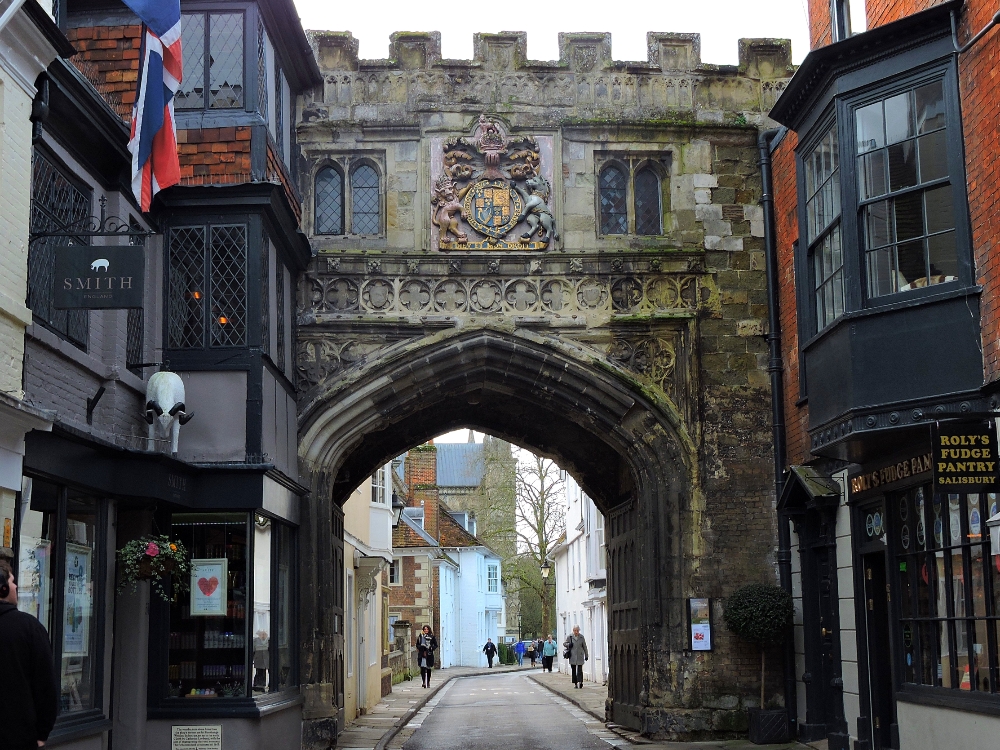
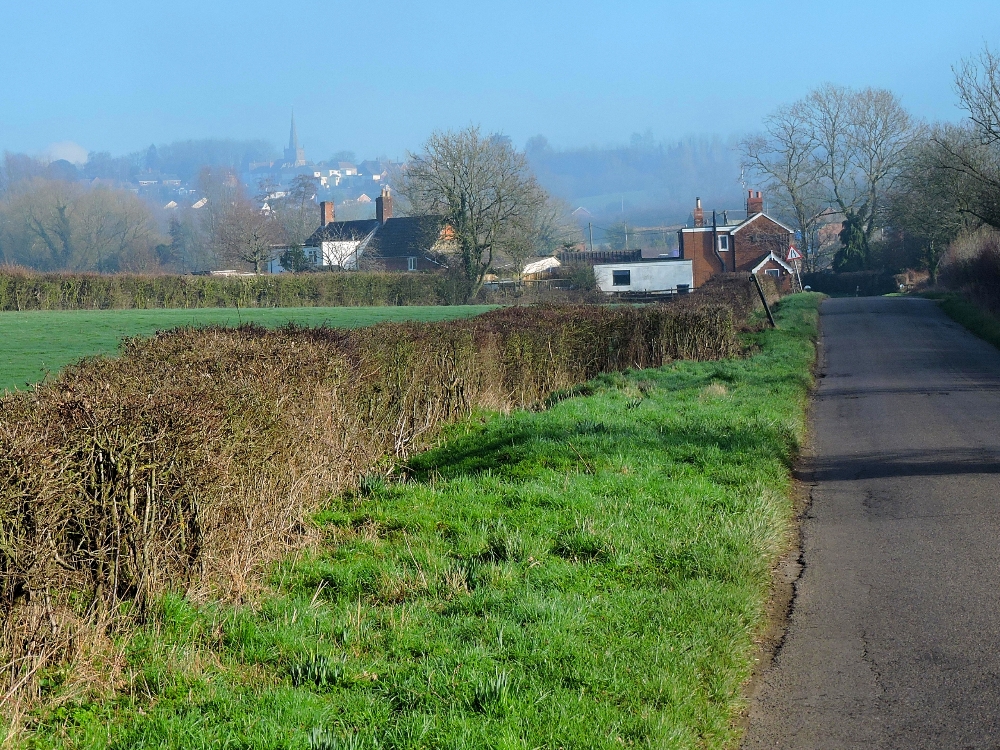
France. This was the only country in Europe in which I had previously done any cycling, when I attended a conference near the Pyrenees in 1997, so I had some idea what to expect. This time I would spend most of my cycling time in Normandy, with just a little more in Alsace, while Covid-19-affected, as previously mentioned. I began in Cherbourg and rode as far as Caen, where I caught an evening train to Paris. Overall, this was one of the most pleasant and enjoyable routes that I had ridden in a long time. The two most impressive aspects were the numerous small villages along the route, which still exist according to their original designs, filled with many elegant stone buildings, and the beautiful network of minor roads which are in good condition and possess the useful property that they can be used to create a route that actually connects places of interest. I covered this fairly short distance in a rather leisurely two and a half days, but I would gladly have spent more time in that lovely region. My route in Alsace was shorter and with just a little terrain, but also quite nice. Bringing the bike on trains in France was always simple, even on the TGV, though in some cases a reservation was needed.
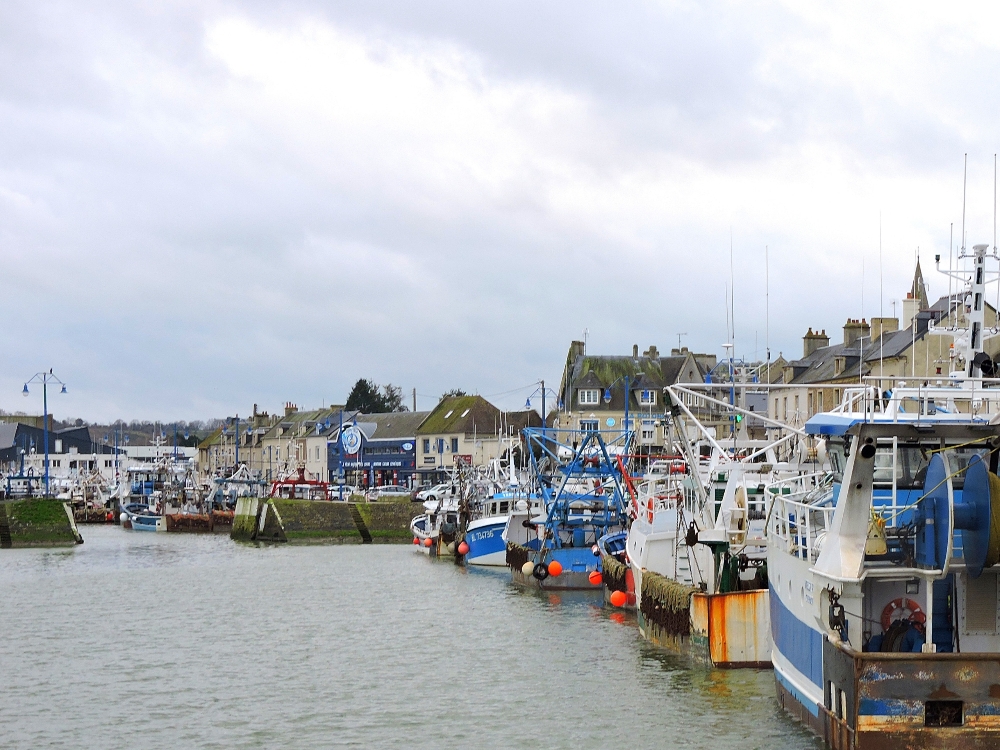
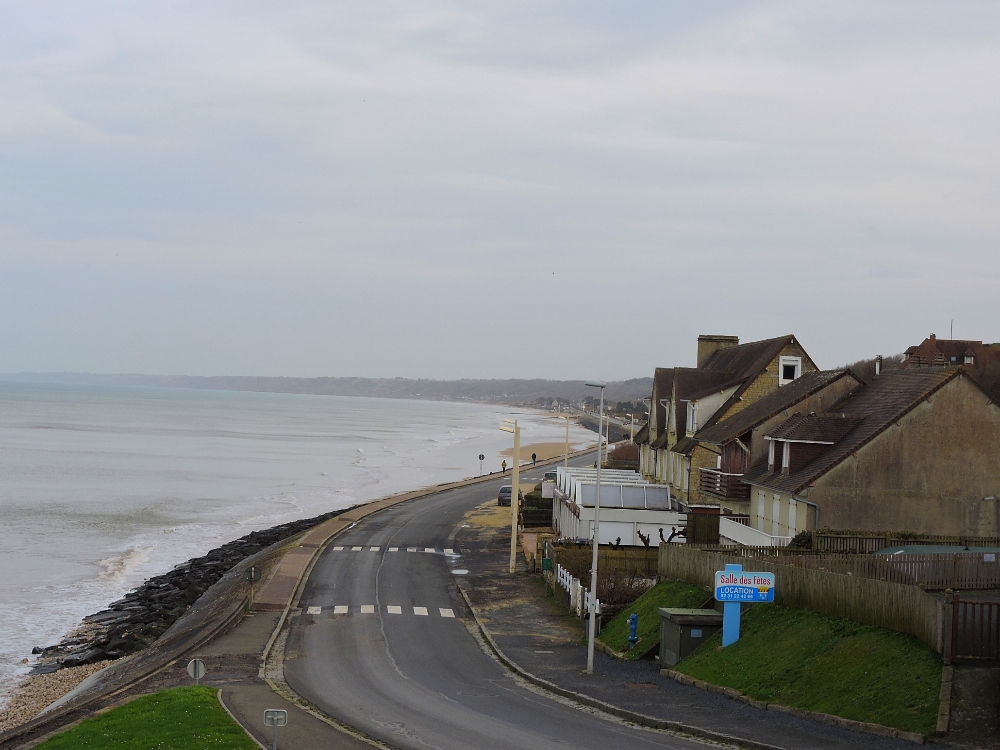
Germany. Apart from one brief foray into the Rhine Valley, my cycling in Germany was all planned for Mecklenburg-Vorpommern, on the Baltic Coast, where I also had a number of family history sites to visit. However, since I was only recently past my Covid experience, I shortened my expected distance there by about half. I began in Wismar, rode to the northeast to Rerik, then made a wandering route south to regional capital, Schwerin. In general, the cycling was good, though Germany has a slightly more motor-based network than some other European countries, not to the level on North America, of course, but slightly more than its neighbors. To compensate for that, a very extensive network of paths and cycleways is in place, and as usual, I have mixed feelings about that. When they are good, they are very good, but like most such networks they occasionally wander around and, even with their extensive signage, if one doesn’t already know the route well it’s not always easy to know which way to go. Additionally, unlike North America, where motor vehicles and bicycles are grouped together, with walkers kept separate, in most of Europe motor vehicles are separated with cyclists and walkers grouped together, which takes some getting used to. I was also pleased to see the high level of cycling within cities and towns, including many nice amenities, like covered bicycle garages. Additionally, the German train system has really got their bike policies down. I have often said that every train everywhere should have one car specifically for roll-on bike transport. The German trains are almost there with about one half of one car left open for bikes, baby strollers, and luggage, which makes a huge difference.
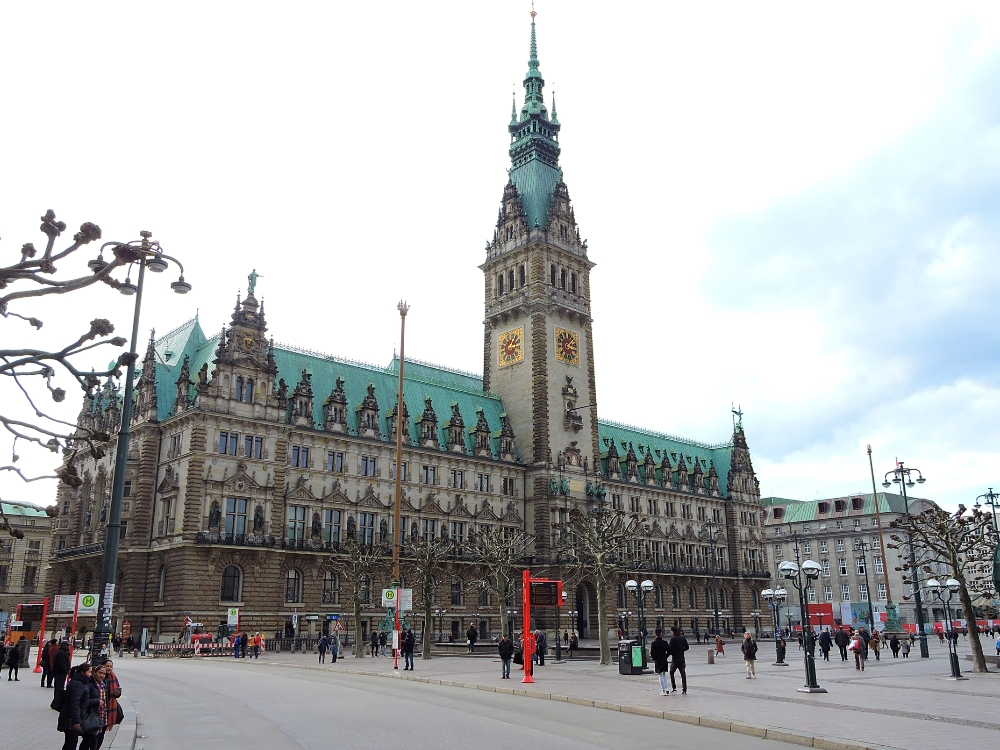
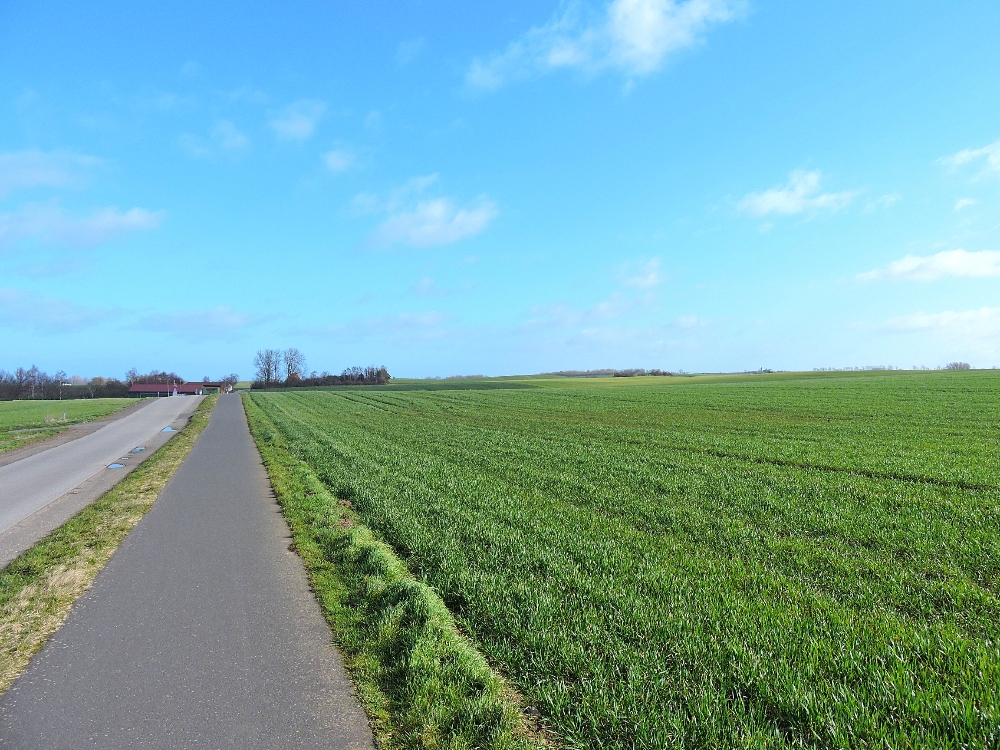
After those short rides, the lockdowns began, and, as of now, just a little more cycling has been completed. It's not been enough, and the remainder of the Tour is still up in the air. As I mentioned above, that uncertainty is perhaps the hardest part for me. I certainly hope the situation clarifies soon.